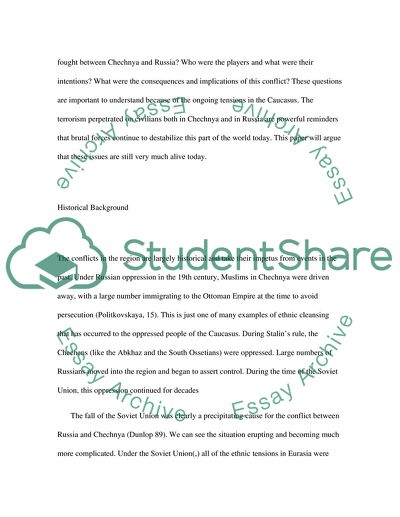Cite this document
(Russias Invasion in Chechnya Research Paper Example | Topics and Well Written Essays - 3250 words, n.d.)
Russias Invasion in Chechnya Research Paper Example | Topics and Well Written Essays - 3250 words. Retrieved from https://studentshare.org/history/1743092-analyze-of-any-terrorist-group-and-investigate-an-issue-related-to-terrorism
Russias Invasion in Chechnya Research Paper Example | Topics and Well Written Essays - 3250 words. Retrieved from https://studentshare.org/history/1743092-analyze-of-any-terrorist-group-and-investigate-an-issue-related-to-terrorism
(Russias Invasion in Chechnya Research Paper Example | Topics and Well Written Essays - 3250 Words)
Russias Invasion in Chechnya Research Paper Example | Topics and Well Written Essays - 3250 Words. https://studentshare.org/history/1743092-analyze-of-any-terrorist-group-and-investigate-an-issue-related-to-terrorism.
Russias Invasion in Chechnya Research Paper Example | Topics and Well Written Essays - 3250 Words. https://studentshare.org/history/1743092-analyze-of-any-terrorist-group-and-investigate-an-issue-related-to-terrorism.
“Russias Invasion in Chechnya Research Paper Example | Topics and Well Written Essays - 3250 Words”, n.d. https://studentshare.org/history/1743092-analyze-of-any-terrorist-group-and-investigate-an-issue-related-to-terrorism.


